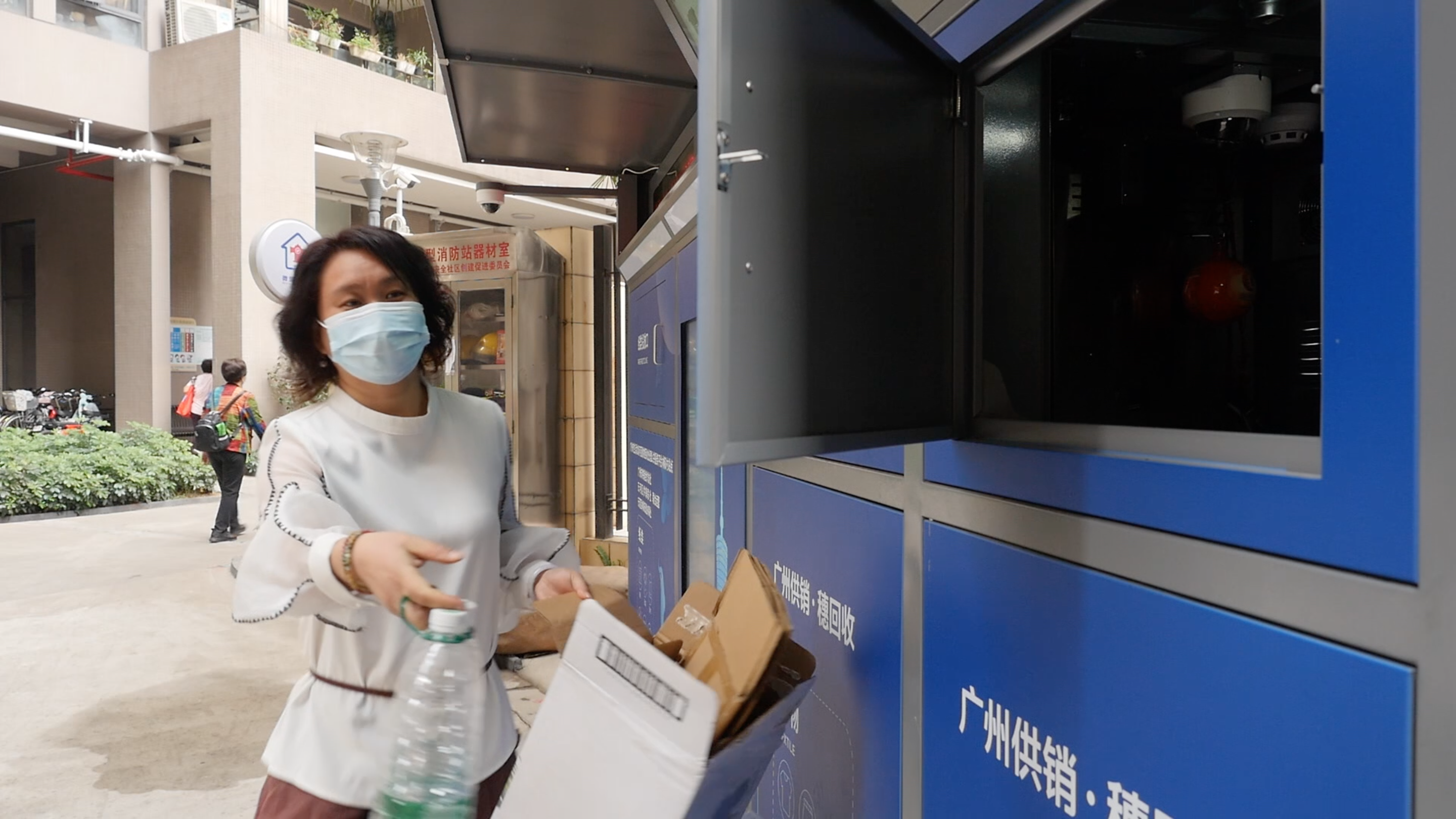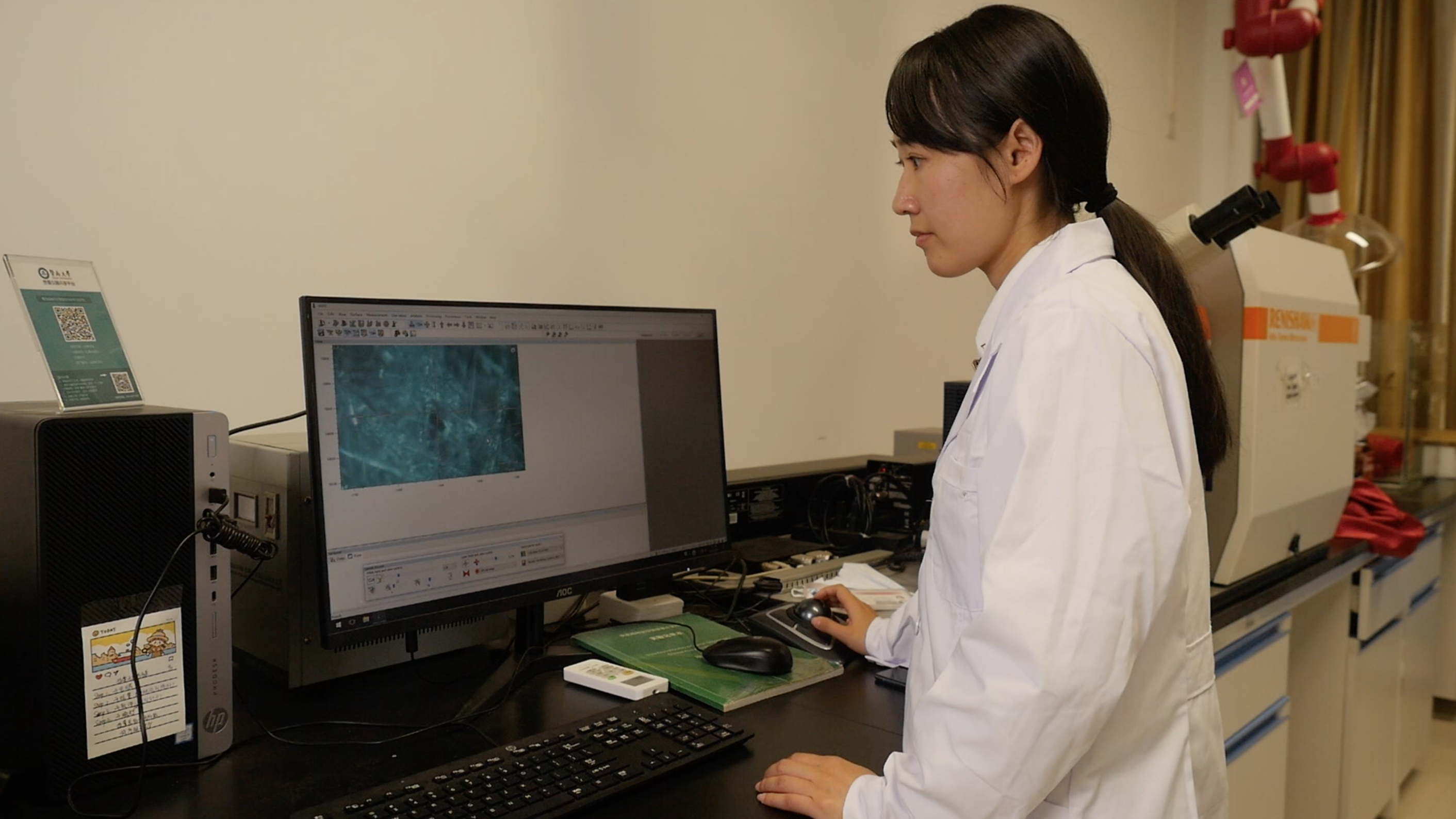02:40

Under Mai Lei's microscope, there's a mesmerizing world of microparticles we can't see with our own eyes. As an associate professor at Jinan University's School of Environment, Mai is an expert at decoding what's been described as a new source of ocean pollution.
Take the middle layer of a typical three-ply surgical face mask and zoom in 20-times closer: what you'll see is a frozen forest of glittery fibers.
"The shiny stuff is plastic, melt-blown together to form an interwoven layer to filter out droplets and particles. This is what helps shield us from the coronavirus," Mai explained.
But a lifesaver in the pandemic can also be a potential killer in the wrong places.
"The key filtration layer of the mask is made of polypropylene. It can take up to 400 to 500 years to degrade in nature," Mai said. "Once they enter the marine environment, organisms will treat them as food. And all of these plastics get stuck in their ingestion tracts, and the organisms would starve."
Around the world, "COVID-19 waste" such as masks and latex gloves are adding to the mounting plastic waste already choking our waterways. Masks and hand sanitizer bottles are washing up on the shores of Hong Kong and swirling around in the lagoons of the Mediterranean.

Mai Lei, associate professor at Jinan University's School of Environment. Huang Yi/CGTN
Mai Lei, associate professor at Jinan University's School of Environment. Huang Yi/CGTN
A toxic problem with alarming figures
But as environmental groups continue to sound the alarm of mask pollution, their numbers can be misleading. Hong Kong-based environmental group OceansAsia captured headlines last year with a survey suggesting "1.5 billion face masks made their way into the world's oceans in 2020."
"This is scientifically incorrect. It's a huge exaggeration and unsupported by peer study," said Eddy Y. Zeng, editor-in-chief of the peer-reviewed journal Environmental Pollution and dean of the School of Environment at Jinan University.
The calculation was based on the assumption that 3 percent of all plastic waste would end up in the oceans every year. Zeng said that is not supported by their own field studies.
There is consensus though among the science and conservation communities that increased plastic pollution presents a long-term threat to the ecosystem.
"The masks eventually break down into microplastics that blend into our rivers and estuaries, and eventually contaminate our oceans. Those particles are much more difficult to recover," Mai said.
"While the effects of ocean plastic pollution on humans are not evidenced, the impact could accumulate and may spread to the rest of the food chain."

Grandtop Fushan Environmental Protection Energy Company, February 23, 2020. /GZ Environmental Protection Investment Group
Grandtop Fushan Environmental Protection Energy Company, February 23, 2020. /GZ Environmental Protection Investment Group
A burning question: How to get rid of plastics?
The solution has to start from land, where the United Nations Environmental Program estimates 80 percent of ocean litter comes from.
When recycling isn't possible, incineration is the answer.
The southern manufacturing powerhouse of Guangzhou is a leader in that area, with the nation's biggest waste-to-energy project.
"Under 1,000 degrees Celsius, the plastics completely decompose. Our emissions meet national and EU environmental standards," said Liu Wen, deputy general manager of Grandtop Fushan Environmental Protection Energy Company.
Liu's team hopes to be the gold standard in tying up loose ends when it comes to dealing with waste in general. "We filter out the toxic smoke, and any excess residue is used to make eco-friendly bricks you can see on the sidewalks all around the city."
Currently 30 percent of Guangzhou's trash is buried. By 2022, the city aims to get rid of all of its daily household waste without resorting to landfills.
Man vs. Waste
Guangzhou's battle against waste is setting an example for the rest of the country, which is why the city played host to a national conference on garbage sorting last year.
"Trying to keep a city of 20 million people clean is no small feat. Public engagement plays a key role in our success," said Feng Mingming, deputy director of the publicity department at the Guangzhou City Management Comprehensive Bureau of Law Enforcement.
One way to mobilize the public is putting smart sorting machines in residential neighborhoods. They are essentially vending machines in reverse: users tap on the screen to select the type of trash they need to get rid of, and drop it down whichever door that pops open.
"The recycling garbage disposal is, yeah, very high tech, it's quite interesting," said Steven Brodie, a British expat living in the central business district. He said while he's used to sorting garbage back home in England, it's been a welcome surprise to see how quickly China has developed its own sorting system and environmental outlook in recent years.
"I know that you can get points for it. I think it's quite useful. If there's an incentive, it gets people cooperating a lot more," said the kindergarten teacher who has lived in China since 2015.
The points for participation can be converted into online shopping discounts. But more importantly, this initiative has drastically reduced non-recyclable waste that would have headed toward the incinerators and landfills, or worse, into the already fragile rivers and oceans.
But the ultimate reward? A garbage-free city, and a healthy planet that will define our future long after the pandemic is over.

